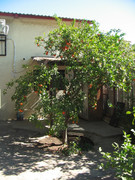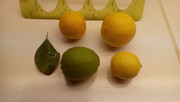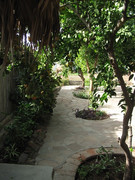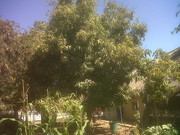151
Tropical Fruit Discussion / Re: Mulching for New Orchard - Good or Bad?
« on: January 25, 2017, 02:45:54 PM »Mulch shouldn't be confused with compost although some mulches express some benefits of compost. Tree trimmer mulch breaks down slowly and will be slow to add nutrients or any organics to the soil, so other amendment sources will be a benefit. The nitrogen content is generally insoluble organics which take a very long time to become available to plants. It also tends to raise pH which may be an advantage for you (http://www.aces.uiuc.edu/vista/html_pubs/mulch/MULCH.html).
I compost chipped tree trimmings with manure, leaves and kitchen and garden waste. It requires a little labor to turn the heap a couple of times and takes about 3 months in my relatively warm climate. This may be a faster way of getting organics into the soil.
Another alternative may be plants that can be used as live mulch (https://www.jstor.org/stable/4046641?seq=1#page_scan_tab_contents). Some can be permanent, others can be cultivated into the soil at intervals.
You should be able to get help/advice from the University of Florida Horticultural Extension which provides outreach to growers in the state (http://solutionsforyourlife.ifas.ufl.edu/agriculture/crops/fruits_and_nuts.shtml). Here is one article from them on mangoes (http://edis.ifas.ufl.edu/mg216). You can search their website for articles on mangoes. You should also be able to contact staff directly.
Good luck with your enterprise.







